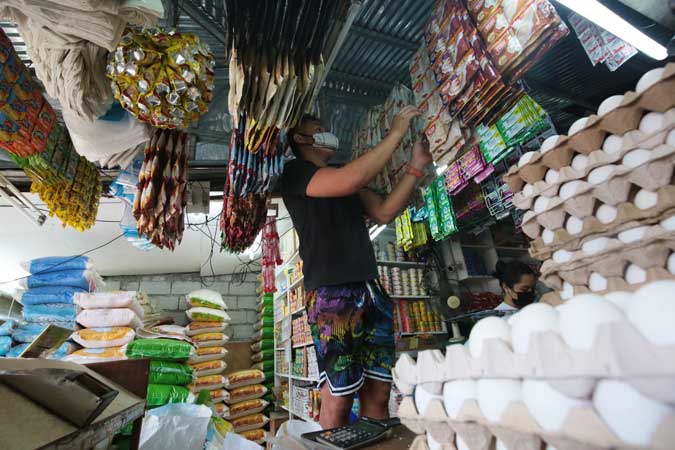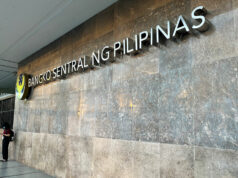Inflation eases to 7-month low in July

PHILIPPINE INFLATION eased to a seven-month low in July, lending support to expectations for the central bank to keep its rates accommodative.
Preliminary data released by the Philippine Statistics Authority (PSA) on Thursday showed headline inflation at 4% in July, slowing from the year-on-year rate of 4.1% in June. Still, this was above the 2.7% print recorded in July last year.
The latest headline figure matched the median of the BusinessWorld poll conducted last week. It also fell within the 3.9%-4.7% estimate given by the Bangko Sentral ng Pilipinas (BSP) for July.
The July result marked the slowest in seven months or since the 3.5% annual rate posted in December 2020. Prior to that, the inflation in June was at a six-month low.
The inflation in July also marked the first time since December that it settled within the BSP’s 2-4% inflation target for the year.
Year-to-date inflation settled at 4.4%, still above this year’s target and above the forecast of 4% for the entire year.
Core inflation, which discounted volatile prices of food and energy items, stood at 2.9%. This was slower than the 3% in June and 3.3% in July 2020. It averaged 3.3% so far this year.
The PSA ascribed the downward trend in July mainly to the lower annual increment posted in the transport index at 7%, from 9.6% in the previous month.
Other commodities that saw slower price increases include alcoholic beverages and tobacco at 10.2% from 11.2% in June; furnishing, household equipment and routine household maintenance at 2.3% from 2.5%; and restaurant and miscellaneous goods and services at 3.6% from 3.9%.
The index for recreation and culture posted a 0.7% decline in June, faster than the 0.6% contraction the previous month.
Bucking the trend were five other indices, including the heavily weighted food and non-alcoholic beverages, which accelerated to 4.9% from 4.7% previously.
Food inflation also picked up with 5.1% in July compared with the 4.9% recorded in June.
On the other hand, the inflation rate for the bottom 30% of income households slightly rose to 4.4% in July from 4.3% the previous month. It was also faster than the 2.9% recorded in July last year. So far, bottom 30% inflation averaged 4.8% this year.
ING Bank N.V. Manila Senior Economist Nicholas Antonio T. Mapa attributed the inflation reading in July to base effects and the easing of supply bottlenecks.
“[T]ransport costs were the main offset to faster inflation from the food basket despite surging global crude oil prices as base effects from pandemic-related transport fare adjustments reversed. Lower inflation for restaurants and other services also provide downside pressure for inflation with price gains dipping to 3.6% (from 3.9%) also due to base effects,” Mr. Mapa said in a statement to reporters.
Alex Holmes, economist at Capital Economics, said the transport index will most likely support easing of inflation in the coming months.
“Our commodities team also expect global oil prices to decline, with Brent crude set to fall to $70 per barrel by yearend and $60 per barrel by end-2022, from around $73 per barrel at present. While this will be offset somewhat by a weaker peso, it should still push transport price inflation into negative territory next year,” he said in a separate statement.
Mr. Holmes also noted a similar case for food inflation, saying: “[T]he ramp-up in imports to ease meat shortages appears to be working, with the annual pace of increase in meat prices falling to 16.0% in July, from a peak of 22.1% in May. This should continue over the coming months.”
To recall, President Rodrigo R. Duterte signed Executive Orders 133 and 134 that increased the quota of pork imports and modified the tariff rates on imported pork products, respectively.
ANZ Research Senior Economist Bansi Madhavani and Chief Economist for Southeast Asia and India Sanjay Mathur expect annual headline inflation to remain within the 2-4% range “in the near term, albeit closer to the upper bound.”
POLICY, INFLATION OUTLOOK
BSP Governor Benjamin E. Diokno said the latest result is consistent with the central bank’s assessment of inflation settling “close to the high end” of the 2-4% target before easing back to within target by the end of the year.
“Meanwhile, inflation is projected to remain firmly within the midpoint of the target range of 2-4% for 2022 to 2023. The continued implementation of direct non-monetary interventions to ease supply constraints remain crucial in tempering inflation pressures,” he said in a Viber message to reporters.
Mr. Diokno also noted the risks to the inflation outlook “remains broadly balanced over the policy horizon.”
“The uptick in international commodity prices due to supply-chain bottlenecks and the recovery in global demand could lend upside pressures on inflation. On the other hand, the emergence of new coronavirus variants and delays in easing lockdown measures are seen to pose downside risks to both demand and inflation,” he added.
The Monetary Board will review the current policy settings on Aug. 12, two days after the second-quarter gross domestic product data is released.
Analysts were in agreement on expectations of BSP keeping its accommodative monetary policy stance but differ on the view whether the central bank will cut rates or keep them steady.
“With the COVID-19 Delta variant now further threatening expected robust economic recovery in 2021, the BSP will continue its accommodative stance to further support the sputtering economic rebound. However, more interest rate cuts may be out of the table, but cuts in the reserve requirement ratio may be considered,” UnionBank of the Philippines, Inc. Chief Economist Ruben Carlo O. Asuncion said in an e-mail, referring to the more infectious variant of the coronavirus disease 2019 (COVID-19).
“We see inflation to be declining toward the end of the year. However, it may not average within the government’s inflation target,” Mr. Asuncion noted.
ING’s Mr. Mapa expects inflationary pressures to be elevated in the second half of the year despite soft domestic demand brought by impending implementation of strict lockdown measures in Metro Manila and the ongoing recession. Contributing to this outlook, he said, were the possible uptick in the cost of basic food items such as canned goods and packaged noodles as well as a possible increase in prices of fruits and vegetables due to typhoon damage.
Metro Manila and its nearby provinces will be under an enhanced community quarantine, the country’s strictest lockdown classification, starting today (Aug. 6) until Aug. 20 to help curb a possible Delta variant-driven surge in COVID-19 cases.
“Despite possible bouts of faster inflation, we fully expect BSP to keep policy rates unchanged for the rest of 2021 and well into 2022,” Mr. Mapa said.
For ANZ’s Ms. Madhavani and Mr. Mathur: “The inflation data is likely to reaffirm the monetary policy stance of staying accommodative. We believe the BSP will keep policy rate unchanged for the remainder of the year,” they said.
Capital Economics’ Mr. Holmes expects the BSP to “act soon” given the easing inflation and the Philippine economy “in desperate need of extra support.”
“We have a 25-basis-point rate cut penciled in for its [Sept. 23] meeting,” he said. — Nadine Mae A. Bo with inputs from Luz Wendy T. Noble




